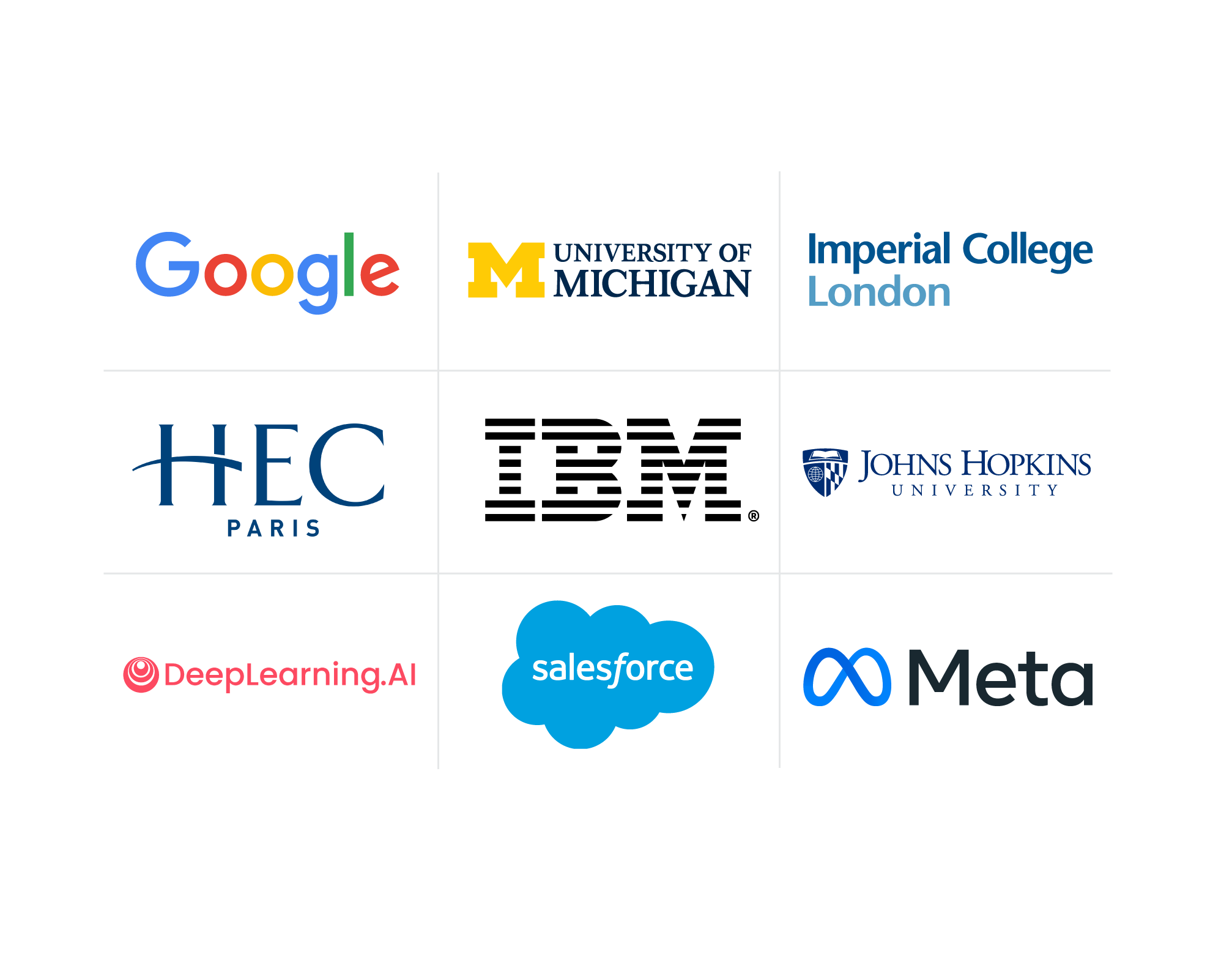A Guide to Learning Design for Companies
To create an effective business strategy, employee learning and development should be top priority. Explore learning design for companies, including existing frameworks and strategies, organizational benefits, and tips to ensure quality over time.
![[Featured Image] Two employees sitting at a table and reviewing educational materials that resulted from their organization's learning design process.](https://d3njjcbhbojbot.cloudfront.net/api/utilities/v1/imageproxy/https://images.ctfassets.net/2pudprfttvy6/2LQFqzsaTTLTyg5543uFeY/9ef81ec1d808edb80a55babb0024c773/GettyImages-550216253.jpg?w=1500&h=680&q=60&fit=fill&f=faces&fm=jpg&fl=progressive&auto=format%2Ccompress&dpr=1&w=1000)
Your organization's learning design is the framework that guides your employees from their initial exposure to a new concept through its practical application in their daily professional lives. When making decisions about the right learning design for your employees and company, it’s important to consider how you present content, how it ties to your organizational goals, and how you can ensure that your offerings deliver quality results.
Explore influential learning models backed by evidence, modern educational strategies built for corporate success, and key steps you can take to develop the most effective program for you.
Why is having a learning design important?
A well-thought-out learning design benefits both the employee and the organization. For one, it assures that all educational materials and training sessions maintain a consistent level of quality and are rooted in evidence-based learning principles. This consistency helps deliver a uniform learning experience across your organization so that every employee receives the same high standard of education and training.
A strategic learning design also aligns your learning strategies with your company’s objectives. In this way, training outcomes will relate to workforce needs that drive organizational success. By utilizing an engaging learning design, you can make employee training sessions more enjoyable while providing high-quality development opportunities, boosting satisfaction and retention over time.
Influential learning design models to explore
While some organizations might create their own learning design from scratch, several existing instructional design models have shaped the way many companies format and implement their educational programs. When you base your content on an existing learning design, you’ll know that your curriculum and instructional strategy are rooted in principles and practices that have proven successful over many years. Instead of taking your best guess at what method will help your employees reach their goals, you can base learning material on tried-and-true strategies that are effective and engaging.
By learning about different learning design models, you can choose one that fits your employee base or take elements from several and create a strategy tailored to your organizational needs. When developing the right learning design for you, consider the following models:
Bloom’s taxonomy
Bloom’s taxonomy is a system that classifies different levels of human cognition. Developed in 1956 by Benjamin Bloom at the University of Chicago, this method divided human thinking, learning, and understanding into six phases: knowledge, comprehension, application, analysis, synthesis, and evaluation [1].
In 2001, several cognitive psychologists revised the taxonomy into a new structure to create a more dynamic representation [2]. This pyramid, from bottom to top, includes remembering, understanding, applying, analyzing, evaluating, and creating.
The goal of this learning design is to guide instructors on how to create appropriate learning objectives for learners, deliver effective instruction, and develop assessments aligned with the learning goals. Each successive level of learning in the pyramid is dependent on mastering the level below. For example, learners cannot apply a new concept if they do not understand it. In corporate training, you can use this taxonomy to classify how effectively employees have mastered a topic and track progress as they integrate new concepts into their skill sets.
Gagné’s nine events of instruction
In this learning model, which Robert Gagné published in his 1965 book Conditions of Learning, the learning process begins with characterizing five categories of learning outcomes: verbal information, intellectual skills, cognitive strategies, attitudes, and motor skills [3]. Further, Gagné proposed nine instructional events:
Attracting learner attention
Informing learners of the objectives
Encouraging recall of past material
Presenting learning materials
Providing guidance on new topics
Encouraging learner performance
Providing feedback
Assessing performance
Enhancing retention and knowledge transfer
According to this learning model, the above steps provide a foundation for learning and inform any effective instructional design strategy. If you were using this method, you would choose a topic and design a teaching sequence that follows the event flow.
Merrill’s first principles of instruction
This instructional design theory, created by David Merrill in 2002, centers on the notion that true learning happens through problem-solving [4]. To use this model, instructors apply five fundamental learning principles: task-centered approach, activation, demonstration, application, and integration.
This means you design learning material around problems and scenarios your learners are likely to encounter, and you actively engage them in using the methods to arrive at an effective solution. By using real-world problems, you activate learner curiosity and connect to the learner’s existing skills and experiences. The demonstration and application phases would provide opportunities for your employees to develop a deeper understanding of a concept and how it would fit into their professional tasks.

Modern learning design strategies
To make the most of your learning strategy, use modern technological tools to create a more engaging and practical learning experience. Online learning platforms can tailor content to employee needs, providing directed modules, engaging delivery methods, and personalized learning experiences. For example, consider the following modern learning design strategies.
Microlearning
Microlearning is a strategy that delivers content focused on a specific topic in short bursts. In corporate settings, employees may have limited time, making this approach desirable when they need to develop specific competencies quickly.
Gamification
Gamification involves incorporating game elements into learning activities. By using points, challenges, and interactive experiences, you can create a fun learning environment that increases motivation without sacrificing employee knowledge retention and skill development.
Adaptive learning
Adaptive learning tailors educational experiences to the individual needs of each learner. By using data and analytics, this strategy adjusts the content and pace based on an employee’s performance and preferences.
Personalized learning
Personalized learning goes beyond adaptive learning by considering the broader context of an employee’s career goals, interests, and existing skills. This strategy involves creating customized learning paths tailored to each employee's needs and goals.
70:20:10 learning framework
The 70:20:10 learning framework posits that 70 percent of learning comes from on-the-job experiences, 20 percent from social interactions, and 10 percent from formal education. This holistic approach encourages companies to create learning environments that integrate experiential learning with coaching and formal training.
Benefits of an effective learning design
When you have an effective learning design, your learning and development (L&D) strategy is more likely to be successful. The benefits of an effective L&D strategy go beyond enhancing employee knowledge to provide long-lasting benefits that can boost short- and long-term organizational success. Some benefits you might experience include:
Attract and retain skilled employees. In the modern workforce, employees often report that high-quality L&D opportunities are a necessity at their place of work. By providing learning opportunities, you can engage your existing employees while creating a more attractive work environment for new, skilled candidates.
Develop a values-based organization culture and brand identity. Your L&D strategy can create an identity for your workplace, build a sense of community across a dispersed employee base, and increase the sustainability of your brand.
Build a sustainable workforce. Your L&D strategy can train your next generation of leaders, creating an engaged, prepared, and evolved workforce that can take on modern business challenges. By focusing on developing your employee leadership abilities, you can enhance your organizational performance and invest in your company's long-term health.
How to ensure the quality of your learning design
A good learning design incorporates feedback loops and continuous improvement processes. This involves a proactive approach to monitor employee skill development and anticipate changes in organizational needs. To build a continuous employee feedback model, you need to follow a few steps:
Inform stakeholders and high-level executives of your intentions and reasoning.
Identify and obtain the technological tools you’ll need to facilitate your evaluation program.
Develop a feedback schedule and plans for development based on feedback.
Implement omnidirectional feedback models to hear from employers and employees.
Share findings within the company.
Monitor your system to confirm that the feedback cycle continues effectively.
By regularly evaluating the effectiveness of training programs and seeking feedback from participants, your organization can make necessary adjustments to improve the learning experience and outcomes over time. When you listen to employees' wants and needs, you can offer educational experiences that excite and motivate them, helping you stay connected to your employee base while making strategic decisions about the design of your learning program.
Learn more on Coursera
When planning a learning design for your organization, you can choose to create a novel method, or you can base your design on existing models such as Bloom’s taxonomy or Merrill’s first principles of instruction. In the modern workplace, employees often prioritize learning and development opportunities, meaning an effective learning strategy can boost employee engagement while driving high productivity within your organization.
With Coursera for Business, you can train teams across your organization in the skills that matter most in today’s digital economy. Your employees will gain access to content from 350+ leading universities and industry partners, where they can build real-world experience with innovative skills, tools, and technologies while earning globally recognized credentials. Our customizable, scalable learning solutions balance workplace and technical skills training in diverse formats, from video clips to guided projects and Professional Certificates. Accelerate your digital transformation and equip employees to drive growth with Coursera.
Article sources
The University of Chicago Chronicle. “Bloom, influential education researcher, https://chronicle.uchicago.edu/990923/bloom.shtml.” Accessed June 20, 2025.
This content has been made available for informational purposes only. Learners are advised to conduct additional research to ensure that courses and other credentials pursued meet their personal, professional, and financial goals.

